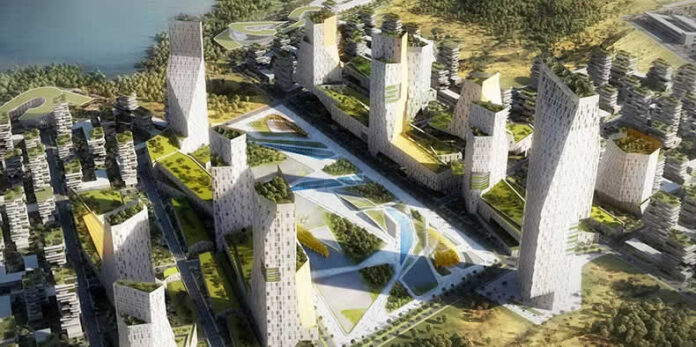The construction industry is rapidly changing. 3D architectural modeling is a significant development. It allows architects to create detailed designs that clients can easily understand. The use of virtual reality and augmented reality makes it more interesting. It allows clients to experience their building designs in greater detail. 3D modeling is efficient and cost-effective. It saves time and money. It is the future of construction design. It will continue to transform the industry. Let’s understand how this area will completely revolutionize the construction and real estate industry.
How 3D Design Is Changing the Construction Industry
Are 3D models the future of the construction industry? Are they here to stay? What is the role of 3D models in streamlining architectural work process? Let’s answer all these questions and a few more via the following points:
- Precise Designs and Lifelike Visualization
- Create detailed and precise designs that are more realistic and easier to understand than 2D drawings.
- Provide an immersive visualization experience. It helps clients to better understand the proposed design.
- Include detailed elements such as textures, lighting, and landscaping. These can help clients make informed decisions.
- Reduce the chances of costly mistakes and changes during construction. This can be done by providing a lifelike representation of the project.
- Transform the construction industry by enabling architects to create accurate and realistic designs. These will benefit both architects and clients.
- Cost-Effective And Timesaving
- 3D architectural modeling design services can help you create multiple design iterations before finalizing the construction plans. This eliminates the need for expensive physical prototypes.
- Reduce the time and cost required for design revisions.
- Accelerate the design process. This leads to faster construction project completion. It also reduces project timelines.
- Enable visualization of the design in 3D. This allows stakeholders to better understand the design. It also reduces the chances of costly mistakes and changes during construction.
- Improve accuracy and attention to detail in the design process. This reduces the chances of errors and rework.
- Effective Teamwork
- Share designs with clients through 3D modeling. This allows them to provide feedback and suggestions in real-time.
- Make changes quickly and efficiently. This ensures the final design meets the client’s needs and requirements.
- Share 3D models with contractors, builders, and other stakeholders. This reduces misunderstandings and errors.
- Easily communicate design changes and updates to all stakeholders. This ensures everyone is informed and on the same page.
- Enhance the communication and collaboration between architects and contractors during the construction phase.
- Eco-Friendly And Energy Saving
- Simulate various scenarios to optimize the building’s design for factors like sun exposure, wind patterns, and energy consumption.
- Identify potential environmental issues. Also, develop solutions to minimize the building’s environmental impact.
- Create detailed and accurate models that aid in the selection of sustainable materials and energy-efficient systems.
- Visualize the building’s energy consumption and identify opportunities for energy savings.
- Test and refine designs before construction begins. This reduces the risk of costly mistakes and changes during construction.
Improve Your Building Designs with Certified Professionals
3D architectural design services have transformed the construction industry. Outsourcing these services to professional firms can provide a range of benefits for architects and clients alike:
- Access to skilled and experienced professionals who specialize in creating high-quality 3D models. This reduces the need for in-house staff and equipment.
- Cost-effectiveness, as outsourcing, can lower the overhead costs associated with hiring and training in-house staff.
- Timesaving, as outsourcing, can allow for faster turnaround times on projects due to the availability of a dedicated team of professionals.
- Improved accuracy and attention to detail, as professional firms, specialize in creating precise and realistic 3D models that are tailored to meet the needs of each client.
- Consistent communication due to the experience of working with clients remotely. This results in regular updates and feedback. This also ensures that the final design meets the client’s expectations.
The Conclusion
With realistic visualization, accurate designs, and efficient collaboration, architectural modeling service technology is transforming the industry. But how can you make sure your designs stand out from the rest? Outsourcing to professionals with the right skill set and experience to bring your vision to life could be the answer. With the right expertise, you can achieve the desired results that meet. You can even exceed your expectations.















